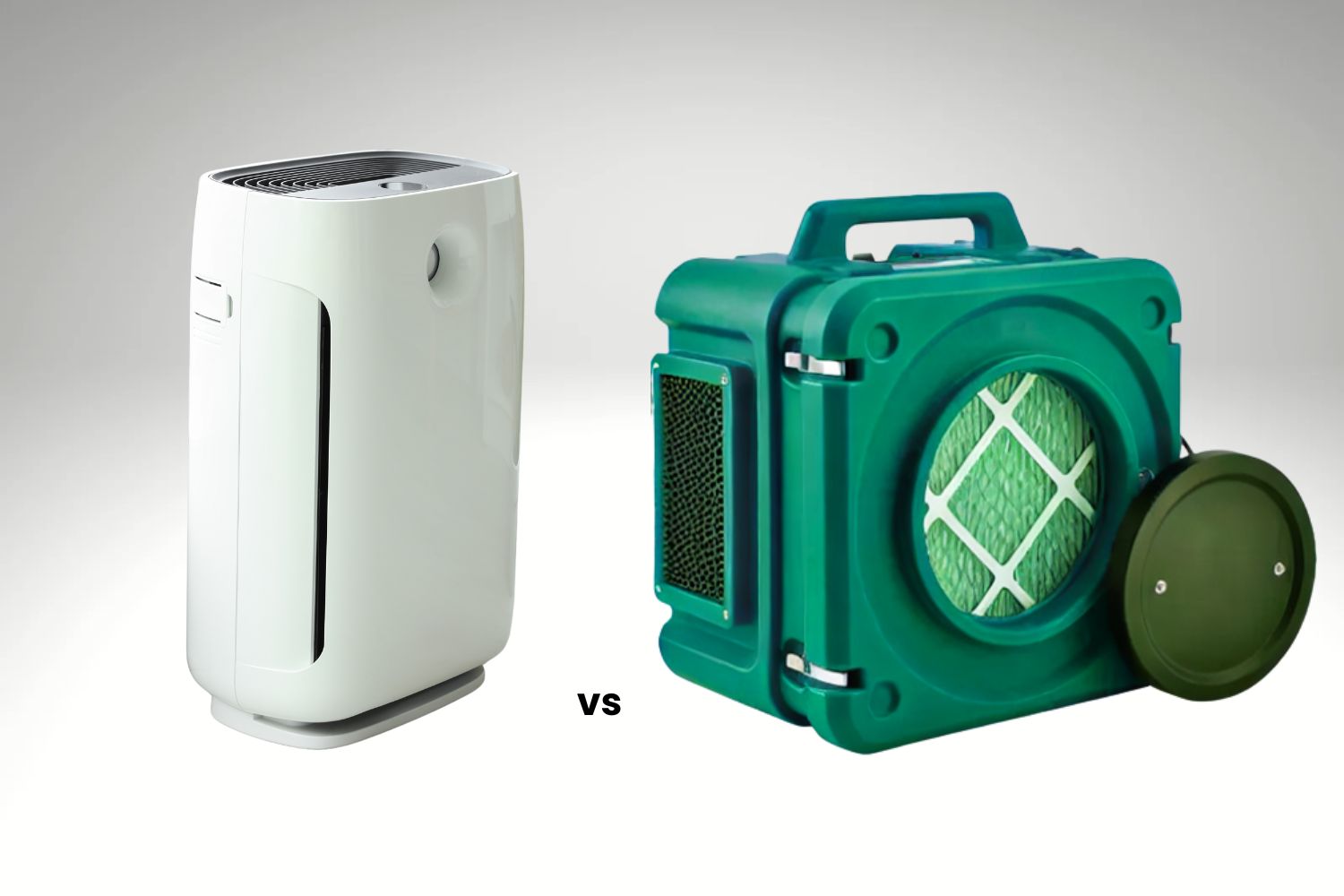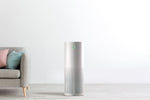Air Scrubber vs. Air Purifier: Understanding the Difference and Why It Matters for Your Home

In recent years, interest in indoor air quality has surged—and for good reason. People spend more than 90% of their time indoors, yet indoor air can often be more polluted than outdoor air. From wildfire smoke and volatile organic compounds (VOCs) to mold spores and allergens, the pollutants inside homes are varied and persistent.
As homeowners look to address these issues, many turn to devices labeled “air purifiers.” But not all air-cleaning devices are created equal. In fact, the term “air purifier” is often used as a catch-all, without much clarity about what a unit actually does, how effectively it does it, or whether it can truly improve the air in a meaningful way.
This is where understanding the distinction between an air purifier and an air scrubber becomes important—especially when it comes to choosing a solution that works for your home.
What Is an Air Purifier?
An air purifier is typically a consumer-grade device that uses a fan to pull air through filters. These filters usually include a HEPA filter (which captures particles like dust and pollen) and sometimes activated carbon (which can help absorb odors and gases).
Air purifiers vary widely in quality. Most are made of plastic and designed to be compact, lightweight, and affordable. They often market large square footage coverage, but without clear context. These numbers frequently overlook critical variables like ceiling height, airflow efficiency, or actual air changes per hour (ACH)—a measure of how often the air in a room is completely replaced.
For example, a purifier might claim to cover 1,500 square feet but only deliver one air change per hour, which may not be sufficient in environments with ongoing pollutant sources. This lack of transparency is a common issue in the consumer air purifier market.
What Is an Air Scrubber?
An air scrubber, by contrast, is a much more robust system originally designed for industrial and commercial use. Air scrubbers are built to handle high contaminant loads, such as during mold remediation, wildfire cleanup, or renovation projects.
They operate using high-powered fans and heavy-duty filters to rapidly cycle and clean large volumes of air—often achieving multiple air changes per hour. These systems are usually built with metal housings for durability, and they're designed to capture a wider range of particles and gases at higher volumes and speeds.
In short, while air purifiers filter, air scrubbers clean—often dramatically more thoroughly, rapidly, and reliably.
Why the Distinction Matters for Homeowners
-
Air Changes Per Hour (ACH): Air scrubbers often deliver 3–4 air changes per hour or more, compared to many consumer air purifiers that may only offer 1–2.
-
Filter Capacity and Efficiency: Scrubbers use larger, denser filters that can capture more pollutants per pass. Many consumer purifiers use filters weighing less than a pound; scrubbers often use filters 4-5 times heavier.
-
Sensor Sensitivity: Air scrubbers are equipped with industrial-grade sensors that respond rapidly to pollution spikes. Consumer devices may lag or miss certain pollutants entirely.
-
Material and Durability: Scrubbers are often made of metal, while most consumer purifiers use plastics that can off-gas and degrade over time.
Jaspr: The Only Air Scrubber for the Home
Historically, air scrubbers were not designed for home use. They were loud, large, and unsightly. That changed with the introduction of Jaspr —bringing true air scrubbing performance into residential spaces without the industrial drawbacks.
Created by wildfire and mold remediation expert Mike Feldstein, Jaspr is engineered with professional-grade standards but made to fit elegantly into homes.
Key Differences that Set Jaspr Apart:
-
Commercial-Grade Filtration and Power: Jaspr’s 4.5-pound filter includes HEPA media and 1 lb of activated carbon. The unit moves over 400 CFM of air at top speed, enabling multiple air changes per hour in large rooms.
-
Verified Mold Spore Removal: In a lab study, Jaspr removed 97% of airborne mold spores in 60 minutes in a 500 square foot room. In 3 hours it reached 100%.
-
True 360° Air Intake: Jaspr pulls in air from all sides and can be placed directly against walls, optimizing space and airflow efficiency.
-
Steel Construction: Jaspr uses cold-rolled steel for durability, safety, and sustainability- it is built to last decades not years.
-
Industrial-Grade Sensors: Jaspr provides real-time air quality feedback with fast, sensitive responses to changing conditions.
The Takeaway: Not All Air Cleaners Are Equal
If you are serious about improving indoor air quality, it's important to understand the difference between air purifiers and air scrubbers. Choosing a device based solely on square footage claims can be misleading if it doesn't deliver enough air changes per hour or if it compromises on filter quality and airflow efficiency.
Jaspr stands out because it offers true air scrubbing capability—designed from the ground up to meet industrial cleaning standards while fitting seamlessly into the modern home.
Understanding these distinctions empowers homeowners to make better choices for healthier, cleaner indoor environments.
Back to Blog




